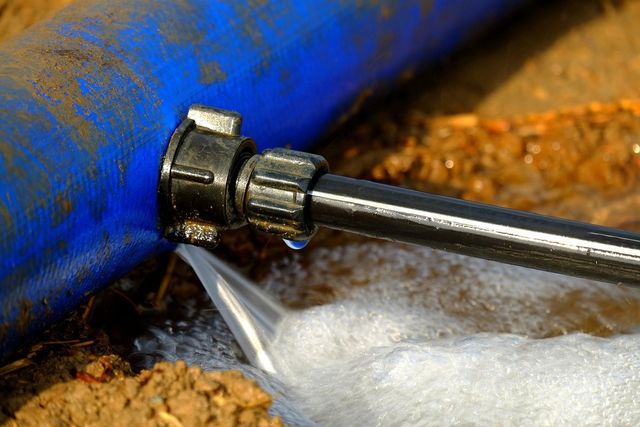Six Proven Ways to Detect Hidden Water Line Leaks Stealthily
Six Proven Ways to Detect Hidden Water Line Leaks Stealthily
Blog Article
They are making a number of great observations regarding Detecting hidden plumbing leaks in general in this article beneath.

Early detection of dripping water lines can reduce a prospective catastrophe. Some little water leaks may not be noticeable.
1. Examine the Water Meter
Every home has a water meter. Examining it is a proven manner in which assists you uncover leakages. For beginners, turn off all the water sources. Make certain nobody will certainly flush, make use of the tap, shower, run the washing machine or dish washer. From there, most likely to the meter and watch if it will certainly change. Given that nobody is utilizing it, there need to be no activities. If it moves, that indicates a fast-moving leak. If you find no adjustments, wait a hr or two as well as inspect back once again. This implies you may have a sluggish leak that could even be below ground.
2. Examine Water Intake
If you detect abrupt modifications, in spite of your consumption being the same, it implies that you have leaks in your plumbing system. An unexpected spike in your costs suggests a fast-moving leak.
Meanwhile, a constant boost each month, even with the very same habits, shows you have a sluggish leak that's also slowly rising. Call a plumber to thoroughly examine your property, specifically if you really feel a warm area on your flooring with piping underneath.
3. Do a Food Coloring Examination
When it comes to water consumption, 30% comes from bathrooms. If the shade in some way infiltrates your dish during that time without flushing, there's a leakage in between the tank as well as dish.
4. Asses Outside Lines
Don't fail to remember to inspect your exterior water lines also. Test spigots by connecting a yard hose. Ought to water leak out of the link, you have a loosened rubber gasket. Change this and make sure all links are limited. It will help get it skillfully examined and maintained every year if you have actually got a sprinkler system. One small leak can squander tons of water and also increase your water expense.
5. Evaluate the scenario and also examine
Homeowners need to make it a behavior to check under the sink counters and also even inside closets for any type of bad odor or mold and mildew development. These 2 red flags suggest a leakage so prompt interest is called for. Doing routine assessments, even bi-annually, can conserve you from a major problem.
Check for stainings and deteriorating as many pipelines and also home appliances have a life expectancy. If you believe leaking water lines in your plumbing system, do not wait for it to escalate.
Early discovery of leaking water lines can mitigate a prospective disaster. Some small water leakages may not be noticeable. Checking it is a surefire way that helps you uncover leakages. One little leakage can lose heaps of water and also spike your water costs.
If you believe dripping water lines in your plumbing system, don't wait for it to intensify.
WARNING SIGNS OF WATER LEAKAGE BEHIND THE WALL
PERSISTENT MUSTY ODORS
As water slowly drips from a leaky pipe inside the wall, flooring and sheetrock stay damp and develop an odor similar to wet cardboard. It generates a musty smell that can help you find hidden leaks.
MOLD IN UNUSUAL AREAS
Mold usually grows in wet areas like kitchens, baths and laundry rooms. If you spot the stuff on walls or baseboards in other rooms of the house, it’s a good indicator of undetected water leaks.
STAINS THAT GROW
When mold thrives around a leaky pipe, it sometimes takes hold on the inside surface of the affected wall. A growing stain on otherwise clean sheetrock is often your sign of a hidden plumbing problem.
PEELING OR BUBBLING WALLPAPER / PAINT
This clue is easy to miss in rooms that don’t get much use. When you see wallpaper separating along seams or paint bubbling or flaking off the wall, blame sheetrock that stays wet because of an undetected leak.
BUCKLED CEILINGS AND STAINED FLOORS
If ceilings or floors in bathrooms, kitchens or laundry areas develop structural problems, don’t rule out constant damp inside the walls. Wet sheetrock can affect adjacent framing, flooring and ceilings.
https://www.servicemasterbyzaba.com/blog/how-to-detect-water-leakage-in-walls/

I came across that piece of writing on Top leak detection hacks when doing a search on the web. Be sure to take a moment to share this article if you enjoyed it. We thank you for reading our article about Hacks to detect leaks.
Request immediate service. Report this page